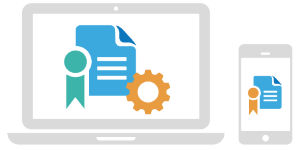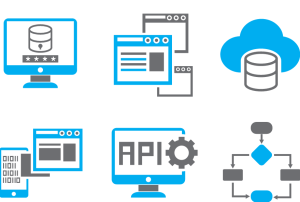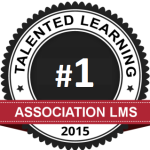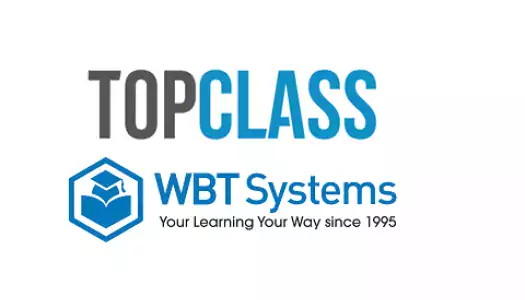A recent article by Talented Learning detailed their selection of the Top 10 Association Learning Management System Solutions in the World. This article was interesting because it highlighted the difference between a traditional employee LMS and an “association LMS”. But what is the difference, and what are the important features to consider when selecting a learning management solution for your association?
According to John Leh at Talented Learning, the key functions of an Association Learning Management System are to:
- “Attract and engage learners”,
- “Sell content”,
- “Manage complex continuing education”,
- “Uniquely integrate into the association technological and business process ecosystem”.
It is clear from the article that providing education opportunities to members is not just a service that adds value for members, but an important revenue stream for associations. Herein lies the difference with a traditional employee LMS, which focuses more on compliance. So, let’s explore which features of an association LMS fulfil the specific business needs of an association.
Attract and Engage Learners
 There are several ways in which associations can attract and engage learners using their LMS. An attractive, easy-to-browse course catalog enables members to peruse the education and professional development offerings of the association. The ability to easily search for and find, relevant, engaging content, will keep members engaged and entice them to return.
There are several ways in which associations can attract and engage learners using their LMS. An attractive, easy-to-browse course catalog enables members to peruse the education and professional development offerings of the association. The ability to easily search for and find, relevant, engaging content, will keep members engaged and entice them to return.
The ability to customize the branding of the LMS to match the association’s website design and layout, also enables the course catalog to be made public, with a seamless transition between the two systems that does not interfere with the user’s experience. Making the course catalog public can attract new members, as they can easily see the value of the educational offerings and the benefit of membership.
Sell Content
 Traditionally, much of the association’s professional development was offered offline, as physical publications or live presentations. Nowadays, to reduce costs and reach a wider audience, associations are offering online asynchronous courses, or virtual instructor-led training via webinar.
Traditionally, much of the association’s professional development was offered offline, as physical publications or live presentations. Nowadays, to reduce costs and reach a wider audience, associations are offering online asynchronous courses, or virtual instructor-led training via webinar.
A good association LMS will facilitate the sale of both online and offline content, and enable the association to provide attractive special pricing for discounts and bundled content offers, or facilitate tiered pricing for members and non-members. Built-in shopping carts and integrated payment gateways seamlessly enable members and non-members to peruse the education and professional development offerings of the association within the LMS and easily complete purchases in a simple step-by-step process. The ease of this process, combined with engaging content, will keep learners engaged and entice them to make future purchases, allowing the association to generate incremental revenue.
Manage Complex Continuing Education
 A key responsibility of many associations is to provide certification for its members. In order to achieve certification, members may have to complete a variety of online and offline educational requirements, which carry a certain amount of continuing education (CE) credits. There are many different types of credit that can be combined in different ways to achieve certification requirements.
A key responsibility of many associations is to provide certification for its members. In order to achieve certification, members may have to complete a variety of online and offline educational requirements, which carry a certain amount of continuing education (CE) credits. There are many different types of credit that can be combined in different ways to achieve certification requirements.
Many LMS allow you to track CE credits, or record certificates achieved, but very few enable you to comprehensively manage complex continuing education requirements and credential maintenance. A good association LMS, enables you to easily design programs to assess the relevant knowledge, skills and competencies of your learners more efficiently, and to simplify the management of every aspect of certification from the registration period, through assessment, to the printing of certificates and notification of credential renewal requirements.
Uniquely integrate into association technological and business processes
 Perhaps the most important feature of any association LMS is its flexibility. The ease with which an association can integrate and implement the learning management system into their existing technologies and business processes, is of utmost importance.
Perhaps the most important feature of any association LMS is its flexibility. The ease with which an association can integrate and implement the learning management system into their existing technologies and business processes, is of utmost importance.
Associations may utilize a number of different systems including member databases and communication tools, payment gateways, eLearning content authoring tools, webinar tools, and the ubiquitous social media networks. The ease with which the new learning management system integrates with each element of the association’s ecosystem and the availability of appropriate implementation, training and support from the LMS vendor will be one of the most important factors for any association to consider.
An association LMS will provide bridges to ensure seamless transfer of data between the LMS and the association member database (such as Personify, iMIS and others). It will adhere to eLearning industry content standards such as SCORM, AICC and ExperienceAPI, to ensure existing content can be easily migrated into the new system. And it will also integrate with a variety of other systems for notifications, social, and ecommerce functions, to flexibly and comprehensively support all of the activities of the association.
 TopClass was described by Talented Learning as: “the association feature powerhouse… designed to meet the most complex association deployments… where even a tiny % of failure is not an option”. If you would like to see for yourself how TopClass Association Learning Management System can provide all of the distinguishing LMS features an association requires, request a demo today.
TopClass was described by Talented Learning as: “the association feature powerhouse… designed to meet the most complex association deployments… where even a tiny % of failure is not an option”. If you would like to see for yourself how TopClass Association Learning Management System can provide all of the distinguishing LMS features an association requires, request a demo today.






